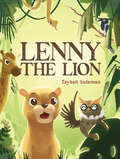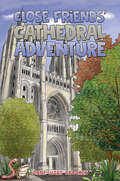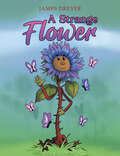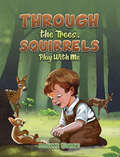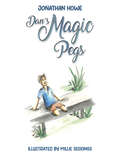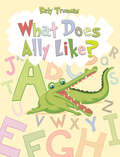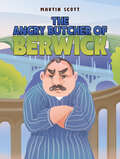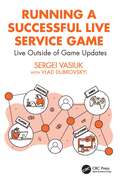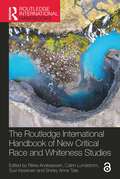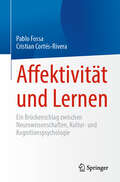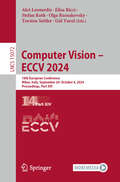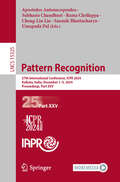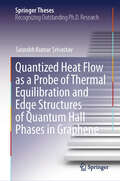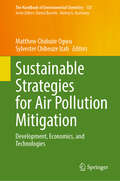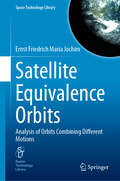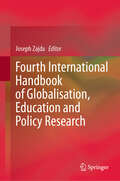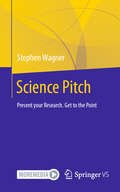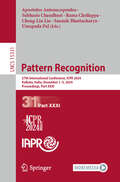- Table View
- List View
Lenny the Lion
by Taybah SulemanA young lion cub embarks on a thrilling journey through the desert, safari, jungle and forest in hope to find his lion pack whilst meeting some fascinating animal friends along the way… Lenny the Lion is an enticing book teaching children the importance of resilience, overcoming obstacles and the value of friendship.
Close Friends’ Cathedral Adventure
by Anne Ward CrockerPeat, a toad, and Paul-Paulette, an earthworm, live in the woods beneath the roots of their friend, Christy, a Christmas fern. One day they are dug up and carried away. Christy is replanted in a pot large enough to hold Paul-Paulette, but Peat is too big to get in and cannot completely hide. He stays under Christy&’s fronds, but can&’t disappear.Together with their wild flower friends, they are taken to the Washington National Cathedral to participate in the annual Festival of Flowers. While the plants are being carried into the cathedral, Peat is discovered, picked up and left in the Garth – the small, enclosed garden near the base of the stairs.This is the story of the little toad&’s adventure as he tries to find his plant and animal friends in the huge building. It is a tour of the cathedral and an introduction to cathedral architecture inside and out. A short glossary of architecture terms is included.
A Strange Flower
by James DreyerJoin Castor Bean, a colourful and brave flower who lives in a field with many other flowers. The flowers are unkind to poor old Castor Bean, even though he has a heart as big as the field. Castor Bean feels lonely and sad, the flowers don’t want him living in the field with them. One day, with great determination and courage, Castor Bean sets off on a strange journey to find a place where he can fit in. He has grand encounters along the way, but still cannot find a place where he is wanted. Suddenly there is great danger and Castor Bean, using his special skills, manages to save the day… once… twice… three times… Can he find a place to fit in?
Through the Trees. Squirrels Play With Me
by Jackie BurnsHi I’m a little boy who goes to the woods most weeks with my parents. While my mommy gets our picnic ready, I like to play with my friends the animals. Today I’ve been playing with squirrels, we had great fun climbing trees and running around. Then the squirrels got hungry and took me to a secret spot where they had hidden their nuts. We all had one, only I couldn’t open mine and smallest squirrel rolled over laughing. Then they took me to a big tree to climb. “I can’t climb that, it’s too big for me to climb”. “Just follow me” said baby squirrel. Before I realised it, I was sitting on the top of the tree looking out across all the trees and I could see other animals running around. I decided that I would play with other animals next time and see the squirrels again.
Dan's Magic Pegs
by Jonathan HoweJoin Dan as he tackles life without legs with an unwavering spirit and joy to inspire all readers. He endures not only his disability at a young age but bullies too, and with the support of his parents, shows the determination, will, and courage to make the best of his situation, and shows the bullies that ‘disabled’ does not mean ‘less-abled’.
What Does Ally Like?
by Katy TruemanLearn your ABCs and identify letters with your favourite animals. With each letter we meet a new friend and find out what it is that they like to do. This book is a fun way for you to learn your letters and what they look like. See if you can find all the letters throughout this fun and creative story of your friends!
The Angry Butcher of Berwick
by Martin ScottThe Angry Butcher of Berwick is infamous throughout the town, and everyone knows he’s angry. For years, the Butcher has served the people of Berwick. He knows your mum, dad, aunt, uncle, brother, sister, grandma, grandad, and even your dog, and they all know he’s grumpy. He cannot walk through the town without being recognized, and everyone knows he’s miserable. Once, the Butcher loved to laugh, joke, and have fun with his friends, but those days are long gone, and they all know it. What happened to the Butcher? Why is he so angry? Can anyone help him find happiness again?
Aisha Learns to Woof
by Glen GoddardAisha the puppy dreams of woofing like her parents, but all her efforts seem to go wrong. With gentle encouragement from her Mum and Dad, Aisha learns that with patience and practice, she can find her voice. This sweet story about learning and growth will inspire children to keep trying and embrace the process of learning new things.
Running a Successful Live Service Game: Live Outside of Game Updates
by Sergei VasiukThis book unveils the secrets of extraordinarily successful games and hands you a smarter way to create exceptional engagement and convert it into revenue. It teaches you detailed LiveOps techniques that show you how to keep your game appealing through engaging events, personalized experiences, and smart monetization.You’ll discover the "3 LAPs of Operations" framework—a dynamic, question-driven process that you can implement to systematically boost retention and achieve your game's financial goals. The book delves into the intricate business of live service games, explaining how to enhance your operational efficiency with precise toolset implementations and analytics.While some studio leaders merely talk about "riding the trend", this approach is far too passive. Embrace the shift towards people-driven game development, where your players evolve from mere consumers into active co-creators. This transformation allows you to construct your own trend, known as People's LiveOps, where you engage your most devoted fans and offer them opportunities to earn a living through their creations.Essential for professionals in live service games, this book is also invaluable for aspiring talents and seasoned experts aiming to enter or excel in the gaming industry.
The Routledge International Handbook of New Critical Race and Whiteness Studies (Routledge International Handbooks)
by Shirley Anne Tate Catrin Lundström Rikke Andreassen Suvi KeskinenSince its foundation as an academic field in the 1990s, critical race theory has developed enormously and has, among others, been supplemented by and (dis)integrated with critical whiteness studies. At the same time, the field has moved beyond its origins in Anglo-Saxon environments, to be taken up and re-developed in various parts of the world – leading to not only new empirical material but also new theoretical perspectives and analytical approaches. Gathering these new and global perspectives, this book presents a much-needed collection of the various forms, sophisticated theoretical developments and nuanced analyses that the field of critical race and whiteness theories and studies offers today. Organized around the themes of emotions, technologies, consumption, institutions, crisis, identities and on the margin, this presentation of critical race and whiteness theories and studies in its true interdisciplinary and international form provides the latest empirical and theoretical research, as well as new analytical approaches. Illustrating the strength of the field and embodying its future research directions, The Routledge International Handbook of New Critical Race and Whiteness Studies will appeal to scholars across the social sciences and humanities with interests in race and whiteness.Chapter 34 of this book is freely available as a downloadable Open Access PDF at http://www.taylorfrancis.com under a Creative Commons [Attribution-Non Commercial-No Derivatives (CC-BY-NC-ND)] 4.0 license.
Affektivität und Lernen: Ein Brückenschlag zwischen Neurowissenschaften, Kultur- und Kognitionspsychologie
by Pablo Fossa Cristian Cortés-RiveraDieses Buch zeigt einen interdisziplinären Ansatz zur Untersuchung der Affektivität beim menschlichen Lernen und überbrückt dabei die Kluft zwischen Neurowissenschaften, Kultur- und Kognitionspsychologie. Es vereint Studien, die über den Fokus auf kognitiv-intellektuelle Variablen, die in Lernprozesse involviert sind, hinausgehen und die Untersuchung der Rolle von Affektivität und Emotionen beim Lernen nicht nur in Bildungssettings, sondern in allen Prozessen der Transformation und der menschlichen Entwicklung einbeziehen. Dazu wird Affektivität als Katalysator und Vermittler von täglichen Lernprozessen kritisch hinterfragt und im interkulturellen Diskurs betrachtet.Die Kapitel dieses Beitragswerkes präsentieren sowohl theoretische wie auch empirische Forschung aus verschiedenen Disziplinen wie Neurowissenschaften, kognitiver Psychologie, Kulturpsychologie, pädagogischer Psychologie, Entwicklungspsychologie und Philosophie und sind in fünf thematische Abschnitte gegliedert. Der erste Teil des Buches enthält Kapitel, in denen verschiedene Aspekte der Affektivität bei Lernprozessen aus der Sicht der Kultur-, Bildungs- und Entwicklungspsychologie erörtert werden. Der zweite Teil widmet sich der Affektivität in Bezug auf Lehrkräfte während ihrer Ausbildung und während ihrer pädagogischen Praxis in verschiedenen Kontexten. Der dritte Teil befasst sich mit der Beziehung zwischen Affektivität und Lernen aus neurowissenschaftlicher Sicht. Der vierte Teil befasst sich mit Affektivität und Lernen in therapeutischen und klinischen Kontexten. Der fünfte Teil fasst Kapitel über Affektivität und Lernen im Alltag zusammen.Durch die Zusammenstellung dieser reichhaltigen interdisziplinären Sammlung von Studien wird Affektivität und Lernen: Der Brückenschlag zwischen Neurowissenschaften, Kultur- und Kognitionspsychologie eine wertvolle Quelle für Forscher in den Bereichen Psychologie, Neurowissenschaften und Bildung sowie für Erzieher und Lehrer, diemehr über die Beziehung zwischen Affektivität und menschlichem Lernen erfahren möchten.Die Übersetzung wurde mit Hilfe von künstlicher Intelligenz durchgeführt. Eine anschließende menschliche Überarbeitung erfolgte vor allem in Bezug auf den Inhalt.
Computer Vision – ECCV 2024: 18th European Conference, Milan, Italy, September 29–October 4, 2024, Proceedings, Part XIV (Lecture Notes in Computer Science #15072)
by Stefan Roth Aleš Leonardis Elisa Ricci Torsten Sattler Olga Russakovsky Gül VarolThe multi-volume set of LNCS books with volume numbers 15059 up to 15147 constitutes the refereed proceedings of the 18th European Conference on Computer Vision, ECCV 2024, held in Milan, Italy, during September 29–October 4, 2024. The 2387 papers presented in these proceedings were carefully reviewed and selected from a total of 8585 submissions. The papers deal with topics such as computer vision; machine learning; deep neural networks; reinforcement learning; object recognition; image classification; image processing; object detection; semantic segmentation; human pose estimation; 3d reconstruction; stereo vision; computational photography; neural networks; image coding; image reconstruction; motion estimation.
Proceedings of Fifth International Conference on Computing, Communications, and Cyber-Security: IC4S'05 Volume 2 (Lecture Notes in Networks and Systems #1128)
by Pradeep Kumar Singh Gregory Epiphaniou Sudeep Tanwar Paulo J. Sequeira GonçalvesThis book features selected research papers presented at the Fifth International Conference on Computing, Communications, and Cyber-Security (IC4S'05) Volume 2, organized in India, during 8th–9th April, 2024. The conference was hosted at GEHU, Bhimtal Campus in India . It includes innovative work from researchers, leading innovators, and professionals in the areas of communication and network technologies, advanced computing technologies, data analytics and intelligent learning, the latest electrical and electronics trends, and security and privacy issues. The work is presented in two volumes.
Pattern Recognition: 27th International Conference, ICPR 2024, Kolkata, India, December 1–5, 2024, Proceedings, Part XXV (Lecture Notes in Computer Science #15325)
by Rama Chellappa Subhasis Chaudhuri Cheng-Lin Liu Umapada Pal Apostolos Antonacopoulos Saumik BhattacharyaThe multi-volume set of LNCS books with volume numbers 15301-15333 constitutes the refereed proceedings of the 27th International Conference on Pattern Recognition, ICPR 2024, held in Kolkata, India, during December 1–5, 2024. The 963 papers presented in these proceedings were carefully reviewed and selected from a total of 2106 submissions. They deal with topics such as Pattern Recognition; Artificial Intelligence; Machine Learning; Computer Vision; Robot Vision; Machine Vision; Image Processing; Speech Processing; Signal Processing; Video Processing; Biometrics; Human-Computer Interaction (HCI); Document Analysis; Document Recognition; Biomedical Imaging; Bioinformatics.
Paradoxes Between Truth and Proof (Synthese Library #494)
by Giorgio Venturi Mattia PetroloThis book is a collection of essays that offer original logical and philosophical investigations into the century-long endeavor to understand paradoxes. It bridges the gap between the two most prominent traditions in the analysis of paradoxes: the truth-theoretic and proof-theoretic approaches. The truth-theoretic tradition stems from Alfred Tarski's solution to the semantic paradoxes, while the proof-theoretic tradition dates back to Dag Prawitz's analysis of set-theoretic paradoxes in terms of structural proof theory. Rather than viewing these traditions as competing perspectives, this volume advocates for the idea that a deeper understanding of paradoxes requires insights from both truth-theoretic and proof-theoretic conceptions of language and meaning. Although the collection does not aim to be exhaustive, it seeks to highlight the vast scope of the subject and its deep connections to various fields of inquiry. The essays are organized into four sections: the first focuses on methodology, the second and third examine paradoxes through the conventional lenses of logical investigation—semantics and syntax—, and the fourth presents a selection of paradoxes that extend beyond the interplay between syntax and semantics, exploring other dimensions of human rationality.
The Future of Third Sector Research: From Theory to Definitions, Classifications and Aggregation Towards New Research Paths (Nonprofit and Civil Society Studies)
by Andrea Bassi Carolyn Cordery Mario Aquino AlvesThe volume discusses the current state of international comparative Third Sector research and potential avenues for future development of the field. Building on seminal work by Helmut Anheier and Lester Salamon, the volume provides necessary updates to ensure further Third Sector research is relevant and impactful due to the changing landscape of international relations and the way that the Third Sector interacts with the state, corporates, and wider civil society to face the new global challenges: environmental, economic and social. The book is articulated in five sections that are organized to move from “theory” to “definition” and “classification” towards “aggregation” (measurement, counting), plus one section dedicated to the relationship between Third Sector and faith. The sixth and final section synthesizes the scientific conversation developed in the five previous ones and opens new research paths for the future. Encompassing multi-disciplinary approaches and international points of view, the volume is directed towards graduate students and researchers across the academic spectrum as well as practitioners and policymakers working in the Third Sector. This is an open access book.
Biodiversity and Business: Bio Prospecting and Benefit Sharing
by Oommen V. Oommen Prakash Nelliyat Laladhas Krishna PanickerThis book addresses the climate risk influencing biodiversity globally and discusses the sustainable use of biological diversity and its legal implications. The sustainable bio-prospecting will help conservation regarding the resources and livelihood support of those who conserve it from the UN CBD perspective. In mega bio-diverse countries, biodiversity provides a number of ecosystem services as well as sources of income/livelihood for millions of poor and they are also the home of a vast repository of traditional knowledge (TK) associated with biological resources which can be translated therapeutically. As for Climate risks, the risks related to unscientific management and use of biodiversity are far more compared to the benefits for society and business and therefore, reducing pressure on biodiversity and developing a sustainable commodity supply chain is essential for both the industry and the governments. Exploring and further mining of the vastness of biodiversity potential, in the marketplace, has been a subject of great consideration among biotechnologists, food processors, health care specialists and the like, as they are real money-spinners. The book will be of interest to researchers/College/ University students interested in ecology and biodiversity conservation worldwide
Mesotherapy and Its Medical Applications (Updates in Clinical Dermatology)
by Howard Maibach Esraa M. AlEdaniThis book is the first authoritative book volume dedicated to the application of Mesotherapy in dermatology. This book provides an up-to-date and comprehensive overview of the basic structural component of Mesotherapy and its constitution from the chemical side of view, then we will discuss its role in cosmetic dermatology, facial rejuvenation, its anti-aging properties, and its role with hyaluronic acid and mesoneedling therapy for facial youthfulness. This volume will describe interplay of mesotherapy and other dermatological diseases such as alopecia hair loss, melasma, acne, psoriasis, and eczema. Chapters will address key issues, such as mesotherapy complications and urticaria that are caused because of it. In addition, the book will discuss severe acute caffeine poisoning due to intradermal mesotherapy injections and the use of mesotherapy as a lucrative business in the cosmetic industry. This book will be a valuable resource to dermatologists, general practitioners, dermatology residents, and medical students.
Quantized Heat Flow as a Probe of Thermal Equilibration and Edge Structures of Quantum Hall Phases in Graphene (Springer Theses)
by Saurabh Kumar SrivastavThis book describes the quantized thermal conductance measurements of integer and several fractional quantum Hall (QH) states realized in graphene devices. Although the electrical conductance quantization of the QH effect in graphene was demonstrated in 2005, a heat flow study of QH states needed to be included. This becomes particularly essential for the hole-conjugate fractional QH phases, where counterpropagating edge modes lead to complex transport behavior. The experimental results reported in this thesis are the first set of experiments done for the quantized heat flow in graphene devices since the first mechanical isolation of graphene flakes. The book devotes two detailed introductory chapters to the electronic properties of the graphene and its bilayer and trilayer parts at zero magnetic fields, and to the essential physics of the integer and fractional quantum Hall (FQH) states, the topological order of FQH phases and the experiments that can detect them. The book has a dedicated chapter for the details of the device fabrication and thermal conductance measurement technique. The rest of the chapters are dedicated to the systematic and detailed documentation of the new experimental findings of quantized heat flow in quantum Hall phases in graphene.
Sustainable Strategies for Air Pollution Mitigation: Development, Economics, and Technologies (The Handbook of Environmental Chemistry #133)
by Matthew Chidozie Ogwu Sylvester Chibeuze IzahThis book reviews air pollution, discussing its far-reaching impacts and presenting sustainable strategies to effectively address and mitigate these challenges. The book explores how addressing air pollution is in alignment with the United Nations Sustainable Development Goals, specifically SDG 3 (Good Health and Well-being), SDG 11 (Sustainable Cities and Communities), and SDG 13 (Climate Action). In this book, readers will find in-depth discussions on the effects of air pollution on human health, ecosystems, and the environment, underscoring the urgent need for effective mitigation strategies and the critical role of air pollution in driving climate change. The book also examines the economic impacts of air pollution and the disproportionate burden it places on vulnerable populations, emphasizing the importance of equitable public health policies and the necessity of social justice in pollution control efforts. Furthermore, this work presents sustainable strategies for managing air quality, stressing their significance for both human health and climate benefits. It provides an authoritative analysis of the policies and regulations crucial to achieving clean air, highlighting their role in reducing the adverse effects of air pollution on public health. Special attention is given to the latest technologies and innovations designed to mitigate air pollution. Together with its companion volume, "Air Pollutants in the Context of the One Health Approach: Fundamentals, Sources, and Impacts," this book serves as an essential resource for researchers, policymakers, students, and all those dedicated to tackling the complex challenges posed by air pollution and its far-reaching consequences for human health, the environment, and global sustainability.
Satellite Equivalence Orbits: Analysis of Orbits Combining Different Motions (Space Technology Library #42)
by Ernst Friedrich JochimThis book presents the essential characteristics of the different satellite motions. Satellite motions can be classified as anomalistic, draconitic, tropical, Hansen-, Kepler-, meridional, Sun-synodical, Moon-synodical motion, depending on the relevant reference point. When two of these types of motions (in some cases even more than two) are coupled, satellite orbits are obtained, which are called equivalence orbits in this book. They share the special properties of the different coupled motions and are therefore of particular interest in the selection of special satellite orbits. In the book the author calculates mean equivalence orbits with secular perturbation formulas, as well as true equivalence orbits considering a complete orbit model including periodic motion effects. Some of the equivalence orbits can be determined unambiguously and with extremely high accuracy, they are stable in the long term. Others can only be found with low accuracy and reduced stability. The author investigates all possible combinations and the associated general equations of condition are derived in each case. Some well-known families of satellite orbits, such as the Sun-synchronous orbits, can be interpreted as mean equivalence orbits. The study of their stability is of great interest in orbit mechanics. Special applications and numerous numerical examples, graphical representations of all possible ranges of the Kepler elements, and detailed studies of the stability of particularly important equivalence orbits are carried out using the Brouwer orbit model as well as the modification by Eckstein. This lays the foundation for possible refinements using arbitrary extended orbital models and for possibly required orbital corrections. Numerous problems are to deepen the treated topics and/or to stimulate for further investigations. The book will be of interest to Astrodynamics and Aerospace Engineers as well as graduate students studying satellite orbits.
Fourth International Handbook of Globalisation, Education and Policy Research
by Joseph ZajdaThis handbook provides a global synthesis of on-going research in education and policy change during the last decade. It examines discourses of globalisation from the perspectives of the global North and global South. Major theories of globalisation and education policy reforms employed in the handbook are classified into two broad categories: structuralist and post-structuralist. The handbook, while examining the impact of global trends in different societies, cultures and educational settings, attempts to synthesise different meta theories of globalisation and their impact on societies and educational systems. It discusses the continued interaction of global, national and local forces and influences, especially the importance of standards and quality driven education reforms, the need to overcome inequality of access to quality schools, and aims at providing quality education for all students. In addition, the impact of neo-liberal ideology on education is examined, in terms of its impact on ongoing standards-driven education reforms globally. The handbook analyses neo-liberalism in education and its focus on increasing global competitiveness, accountability, efficiency, quality, standards-driven policy reforms and educational stratification. The impact of globalisation on education policy and reforms is a strategically significant issue for us all. The unifying conceptual framework, used in the handbook to critique strategic significance of globalisation, is grounded in discourse, CDA and critical theory. The work offers the latest findings concerning major issues in education and policy directions, such as global social and economic inequality, neo-liberal standard-driven education and policy reforms, performing schools in the performing culture, education for human rights and social justice, new perspectives on education for sustainability, dominant and effective models of values education in schools, and the ubiquitous impact of ICTs on education systems.
Science Pitch: Present your Research. Get to the Point
by Stephen WagnerHow can scientists present their projects with power to the point? This book is the ultimate guide for transforming complex research into captivating, convincing Science Pitches in a given time. The innovative ESPRIT model equips scientists with tools to blend professional expertise with personal passion, ensuring every presentation resonates deeply with its target audience. This concise manual combines research excellence and professionalism. It integrates artificial intelligence (AI) applications and slide design. Practice-oriented advice is enriched with real-world examples preparing for outstanding presentations. Designed for students and researchers eager to gain visibility, this book is a unique guide to getting your message across; it advances your research and engages your audience. Unlock your project’s potential and wrap expertise and passion in unique science storytelling. The Science Pitch results in a convincing short talk, successful networking, and securing funding approval for the research project. Via app: Download the SN More Media app for free, scan a link with play button and access videos directly on your smartphone or tablet.
Pattern Recognition: 27th International Conference, ICPR 2024, Kolkata, India, December 1–5, 2024, Proceedings, Part XXXI (Lecture Notes in Computer Science #15331)
by Rama Chellappa Subhasis Chaudhuri Cheng-Lin Liu Umapada Pal Apostolos Antonacopoulos Saumik BhattacharyaThe multi-volume set of LNCS books with volume numbers 15301-15333 constitutes the refereed proceedings of the 27th International Conference on Pattern Recognition, ICPR 2024, held in Kolkata, India, during December 1–5, 2024. The 963 papers presented in these proceedings were carefully reviewed and selected from a total of 2106 submissions. They deal with topics such as Pattern Recognition; Artificial Intelligence; Machine Learning; Computer Vision; Robot Vision; Machine Vision; Image Processing; Speech Processing; Signal Processing; Video Processing; Biometrics; Human-Computer Interaction (HCI); Document Analysis; Document Recognition; Biomedical Imaging; Bioinformatics.
Pattern Recognition: 27th International Conference, ICPR 2024, Kolkata, India, December 1–5, 2024, Proceedings, Part XXVIII (Lecture Notes in Computer Science #15328)
by Rama Chellappa Subhasis Chaudhuri Cheng-Lin Liu Umapada Pal Apostolos Antonacopoulos Saumik BhattacharyaThe multi-volume set of LNCS books with volume numbers 15301-15333 constitutes the refereed proceedings of the 27th International Conference on Pattern Recognition, ICPR 2024, held in Kolkata, India, during December 1–5, 2024. The 963 papers presented in these proceedings were carefully reviewed and selected from a total of 2106 submissions. They deal with topics such as Pattern Recognition; Artificial Intelligence; Machine Learning; Computer Vision; Robot Vision; Machine Vision; Image Processing; Speech Processing; Signal Processing; Video Processing; Biometrics; Human-Computer Interaction (HCI); Document Analysis; Document Recognition; Biomedical Imaging; Bioinformatics
